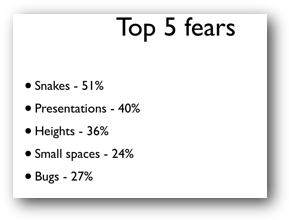Entries from January 2013 ↓
January 18th, 2013 — Customer service, social media, social media marketing, social networking, twitter
If you’re going to use social media as part of your marketing strategy, you’ll need to know how your consumers are using it to make sure you’re getting the right type of information to the right people.
As more and more people start to dabble in the ‘social side’, the marketing landscape begins to change. People want to get their information in different ways, they want to connect with companies directly and quickly and how they access social media is also changing.
A recent report by Nielsen and McKinsey, called Social Media Report, looks at the survey results of consumers to discover how they use social networks.
Mobile time is increasing
With the rising number of smartphone users, it’s hardly surprising that the report found consumers are increasingly using their smartphones and tablets to access social media.
The main device used is still the PC, 43% of users said they used smartphones to access social media, with 16% using a tablet.
That would therefore suggest that as marketers, you should be investing in your mobile content. That means a mobile website, using social media and perhaps even getting your own app.
Pinterest rises
As a copywriter, Pinterest is something that I still haven’t really got to grips with. But perhaps that should now change as the report showed that it had not only the highest increase in audience, but also the largest amount of time spent on any social network across all devices.
Of course, simply having an interesting display of great items on Pinterest isn’t going to do you any good unless you actually engage with other ‘pinners’.
Feel good feeling
One of the most surprising findings is that 76% of social media users said they experienced positive feelings after using it. The felt informed, excited and connected.
Of course, you’re not going to please everyone all of the time.
Social TV and Twitter
Twitter was also discovered to be the most powerful driver of ‘social TV’ – that means that it’s the one platform people (usually adults aged between 35-44) use to share their views and opinions about what they’re watching (e.g. sports events, Elections etc.).
The report goes on to say that in June 2012, one third of active Twitter users tweeted about TV content, up from 26% from the beginning of the year.
Customer service through social media
The report showed that 1 in 3 social media users prefer is receive customer service through social media platforms as opposed to contacting the company by phone.
Of course, for marketers that means that consumers are used to receiving instant feedback and in fact expect it, so it’s important that your use of social media allows you to respond quickly.
The emergence of the social advert
What do you think about the social adverts you see on Facebook etc.? Well, apparently 33% find them annoying, but surprisingly 26% of those surveyed said they were more likely to pay attention to an advert posted by a friend.
Perhaps you should give some extra thought to your social advertising plan.
The social buying decision
The growing use of social media is changing the way people shop. Today, consumers use their social media channels to learn about other peoples’ experiences (70%) and information about a brand’s products or services (65%).
So, you really need to think about your brand image and how you come across as a company.
Over to you
How do you feel about using social media today?
Did any findings in the report surprise you?
Leave comment and tell us what you think.
January 16th, 2013 — blog, blogging, blogging for business
Running a successful blog is a real labour of love.
It’s hard work, never ending, but can be very rewarding.
But what happens when your analytics show that your audience is in decline?
Rather than scream, hide in the nearest cupboard or burst into tears, it’s time to get proactive and do something about it.
The following are some of the tell tale signs that show your audience is falling and what you can do to counter it.
1. Pages per visit
This is one of the figures that will be shown by your analytics.
Ideally, you want people that come to your blog to read one post and then follow a link to read another one. But if your figures are showing that people are only visiting one or two pages (or at least the number of viewed pages has been declining over 6 months or so), that’s a sure sign that your blog is losing its appeal.
Now would be the time to take a look at what you’re been writing and reviewing it. A good tool to use for this is Social Crawlytics, a free tool that helps you analyse how popular or unpopular your content is (or your competitor’s). It provides a detailed report to show where content is shared and how often.
Find out what is working best and give your audience more of the same.
2. Average time of visit
How long are your visitors staying on your blog?
This one is closely related to number 1. If they are arriving and then leaving again almost immediately, it’s a sure sign that your content isn’t engaging them. It may also be because they don’t find it relevant to them.
Again, it’s time to review your content and start putting out more of what does work.
3. Increasing traffic
Increased traffic is what you want, but not if you’re not doing anything to get it.
‘Free’ traffic like this can lead to complacency. It’s very easy to sit back and take it easy thinking you don’t have to do anything about promotion as people are coming of their own accord.
The problem is this is likely to be short lived, so what happens when it stops? You can’t afford to stop promoting your blog.
4. One source of traffic
This is bad news, just as if your business relied on one main customer.
For example, if you rely solely on Google traffic, what happens if you’re badly affected by the next algorithm change?
Make sure you put just as much effort into your newsletter, social media, video and website promotion to bring traffic in from all over the place.
5. Dedication
As we mentioned earlier, running a successful blog takes a lot of dedication.
If you start getting complacent or can find any number of other things to do when you should be blogging, think about the bigger picture.
What will all those readers do without your words of wisdom? They rely on your content so don’t let them down.
6. Getting stale
If you’re finding it difficult to constantly generate new ideas, (let’s face it if you’ve been running your blog for several years it’s going to get harder), perhaps it’s time to diversify a bit and bring a new topic into your blog’s remit.
This will not only breathe life into your blog, it may also open your writing up to a whole new audience.
Keeping a long-running blog fresh is difficult, but hopefully the above has given you a few ideas about how you can inject new life into it.
January 14th, 2013 — social media, social media marketing
Social media marketing is something that most businesses are using to promote their brand and raise awareness.
I say most because there are still some that shy away because they either don’t know how use it effectively, believe their results can’t be monitored or have dabbled but been disappointed with the results.
The ability to measure your social media performance is the only way you can hone what you’re doing to achieve the results you want.
A recent post on Social Media Examiner caught my eye as it talks about 3 analytic tools you can use to help improve your performance in the social media arena.
This is the first of the tools that they talk about.
Through it you can set up alerts based on keywords, then content related to those keywords is shown through the Mention application or sent to you by email or social media.
This helps you find potential business, build and enhance relationships and respond quickly to situations that could potentially damage your brand.
The Social Media Examiner post goes into more details about how it works and how to set it up (link at the end of this post).
This simple, free tool will help you assess your Facebook Page and give suggestions about how you can improve it. Unlike the analytics provided by Facebook, LikeAlyzer is not complicated is use and can give you some very valuable insights.
In a nut shell, it looks at your Page and assesses how well it performs in relation to other Pages, grading it from 0 – 100 (higher is better).
Then it makes suggestions about how you can improve your Page based on this analysis.
Again, further details about how you can set this tool up are given by Social Media Examiner.
Another free tool, this one analyses how popular or unpopular content is on a website and can be very handy when you want to check out the performance of your or your competitor’s blog.
By analysing the content, it gives you a detailed report on where content is shared and how often.
Once you find out the most popular type of content you can generate more of the same, but it’s a good idea to do this regularly as your audience’s tastes may change over time.
These 3 tools will help you improve your social media performance, so for more information about how to set them up and use them, head over to Social Media Examiner today.
January 14th, 2013 — copywriting, copywriting tips
The following guest post was written by Dr Simon Raybould. The author’s views are entirely his own and may not reflect the views of FreelanceCopywritersBlog.com. If you are interested in producing a Guest Post for this blog, please get in touch with your ideas.
I’m a good writer – that is, I put a good choice of words in a good order. The result is something that says what I mean and means what I say.
Well, I like to think so. Other people might disagree.
As Coleridge once said (allegedly) “Prose, words in their best order. Poetry, the best words in the best order.” Which makes copywriting a form of poetry, I suppose. Perhaps we could define copywriting as ‘The best words in the best order to sell’. How does that sound?
If that’s the case, then I’d define presentations as the best words in the best order to explain and/or inform.
Now, as any professional presenter or presentation skills trainer will tell you, one of the best ways to get your message across in a presentation is not to use words at all – well, not lots of words on a screen, at least. Stories you tell out loud aren’t what I’m thinking of here.
I’m thinking of the dreaded screen full of crap.
The bullet point deluge that carries enough ordnance to supply Camp Bastion for a week.
We know that slides with images and very view words work best (and by ‘we’ I mean those people who research into how to make good presentations and who teach people how to make good presentations!). The research evidence is that slides like this don’t work…

…when compared to slides like this…

Notice the lack of words?
Obviously, it’s not possible to get away with having no words on your slides all the time, so it becomes a question of what I pretend is the ultimate copywriting challenge – getting just one or two words to capture everything you want to say.
There are few fixed rules about how to do this, but I offer the following guide-lines, based upon experience of professionally appraising thousands of bad presentations (oh, God, the pain! Those are hours of my life I can never get back!).
Sentences are a mistake in slides (unless you’re quoting someone like Einstein, in which case have the courtesy to quote him in full). This is because a sentence takes too much processing. Phrases are better. Now obviously I’m over simplifying here, because a sentence can have just one word in it: “Run!” is a perfectly formed sentence, but you know what I mean.
A full sentence is a closed concept – it doesn’t pro-actively engage a member of the audience who reads it on your slides because all the work has been done for them by you. You can absorb sentences passively. Presentations are not books – or pamphlets or whatever…
Phrases are better. Grammar be damned – it’s all about effect, not keeping your company’s grammar police happy (hello Clare! I love you really.). “Ensure you have an uptake level above the required thresholds” is dull, closed sentence, compared to “Uptake targets”.
Besides, it takes a lot less time to read just two words – which means your audience’s attention will be pulled back to you (and you’re interesting, remember!) in much less time.
Passivity is a mistake (in slides, at least). Okay, to be completely honest, if you have so few words that you’re down to single words or pairs of words (a verb and an adjective) such as “Work harder”, then it’s hard to worry about whether your words are in the active or the passive voice… but if you’ve got a choice, the active voice is better.
Let’s fact it, who wants to “Receive instructions” when they can “Grab the facts”?
Finally…
Explanations are a mistake. What I mean by this is that if you’ve got to explain what you mean, what you’re writing is too complicated (for a slide). See what I’ve done there?
To be really effective, your slides should engage your audience immediately. Audiences don’t like working hard to understand slides: they don’t mind working hard to understand your message, of course (sometimes) but the slides themselves need to be simple so that the audience can grab ‘em immediately.
An analogy I used for my second book was ‘like a brick wrapped in velvet’. The message – your brick – can be as hard hitting and difficult as you like but you need to wrap it in something that audiences can get hold of easily – such as velvet – if you want them to pick up your brick.
(Yes, yes, it’s a rubbish analogy but I was a young man when I wrote that book!)
In short, you should never need to say something twice, in a different way. If you do, your original explanation wasn’t clear enough.
In other words, you shouldn’t need to do what I’ve just done!
Author’s bio:
Dr Simon Raybould is one of the UK’s foremost presentation skills trainers (see http://www.curved-vision.co.uk to see how he and his company can help you). He’s also a professional speaker in the area of resilience, emotional robustness, confidence and happiness. (See http://www.divventpanic.info).
He lives in Newcastle, with his wife and two children (when they want something) and is a reasonably proficient fire-eater!
January 11th, 2013 — copywriting
Isn’t it incredible how the English language continues to evolve.
Watching costume dramas always brings a smile to my face as the actors try and navigate their way through the archaic and stilted language of the period being depicted. It’s whilst chortling quietly to myself that I realise how much our language has changed and continues to do so.
That’s why I wanted to share with you the 12 words that Collins Dictionary claims to have played the greatest role in defining the character of the year (courtesy of The Drum)
- Broga – yoga for men
- Legbomb -Angelina Jolie’s red carpet pose
- Eurogeddon -Eurozone economic crisis
- Mummy porn – inspired by 50 Shades of Grey
- Zuckered – Facebook share price plummet
- Jubilympics – combination of the Queen’s Jubilee and the Olympics
- Romneyshambles – when Mitt Romney’s UK visit didn’t go as planned
- Games Makers – the Olympic volunteers
- 47 per cent – the people Romney castigated in the US election
- Superstorm – storm just below hurricane strength
- Gangnam Style – the South Korean pop song
- Fiscal Cliff – US tax hikes and spending cuts for 2013
Can you think of any more?
What recent addition to the English language makes you smile, cringe or roll on the floor with laughter? Tell us by leaving a comment below.








